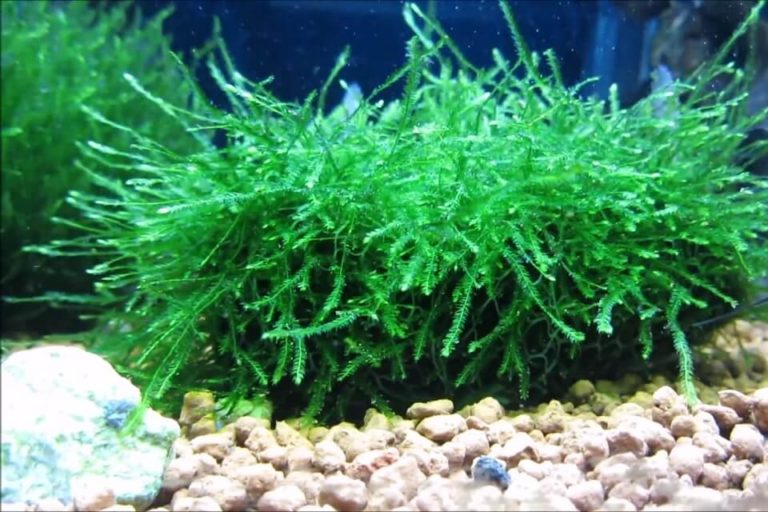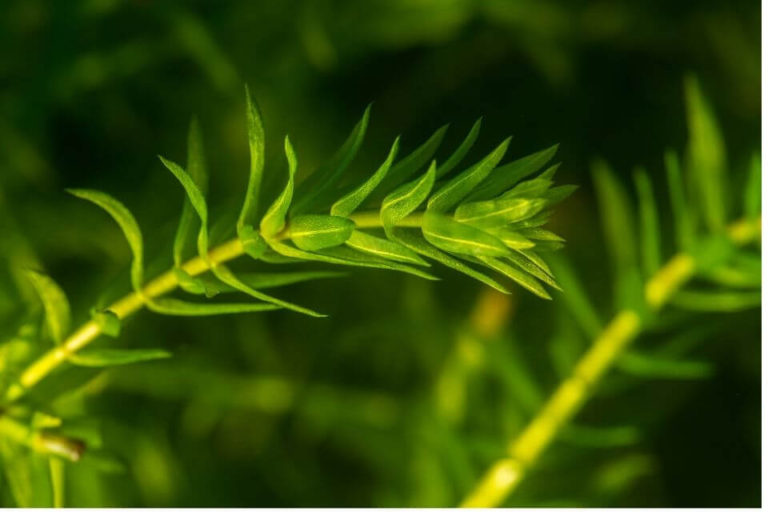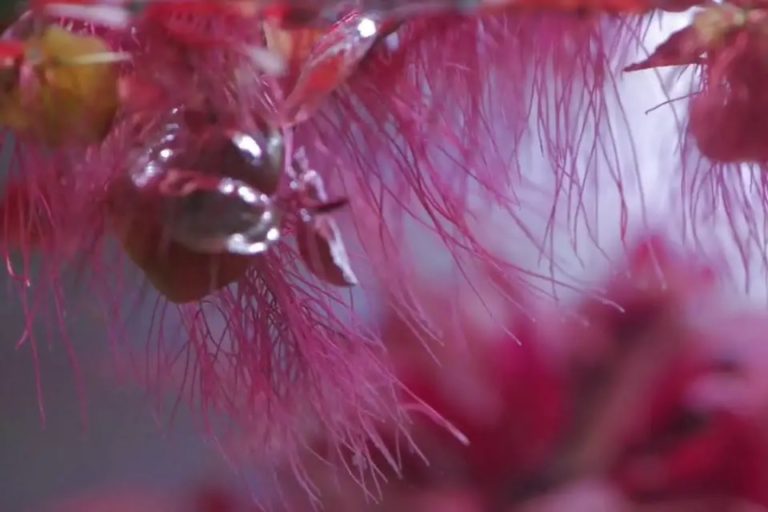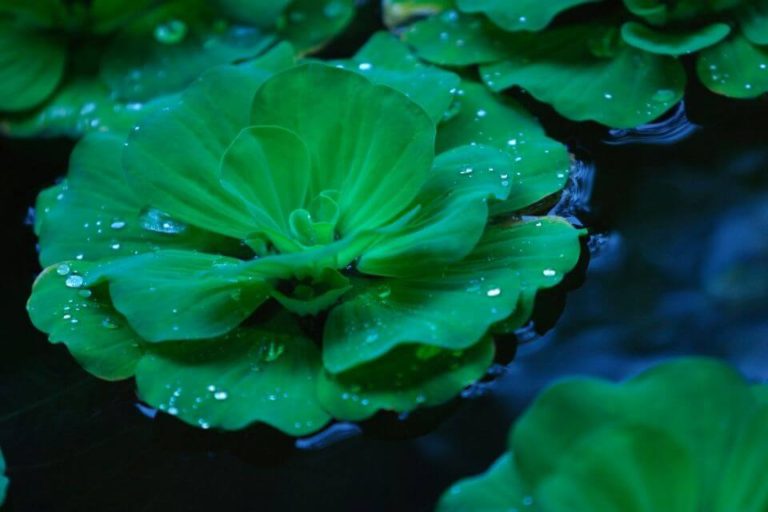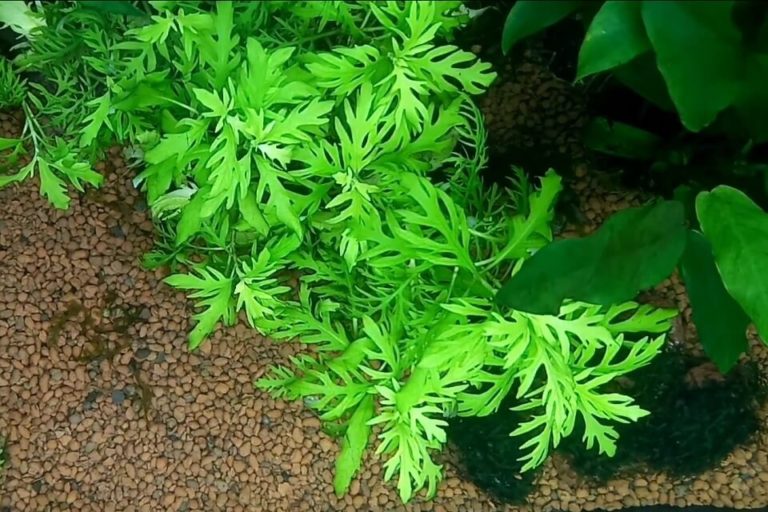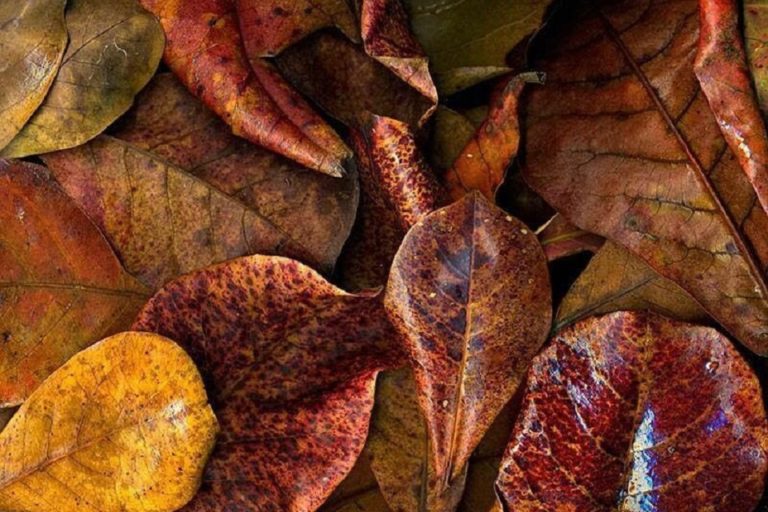Amazon Sword Plant: Complete Guide to Care, Planting and Propagation
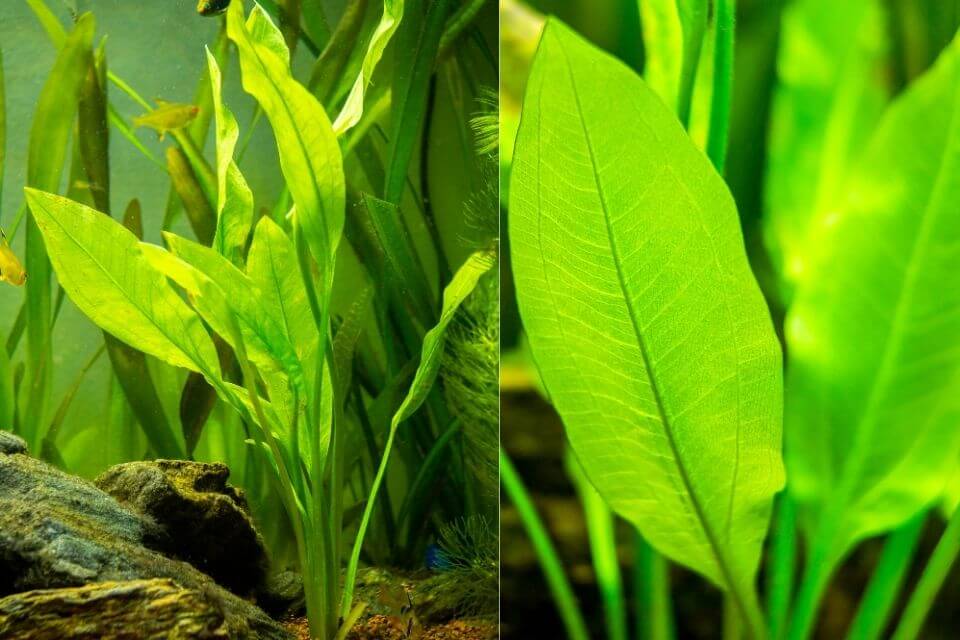
Amazon Sword is one of the most common live aquarium plants for freshwater aquariums. It is a sword-like-shaped plant with a light shade of green that is a beautiful addition to your underwater paradise.
That it is a hardy plant and easy to care for is why you should have it in your tank. This aquarium plant is ideal for any tank setup and creates a forest-like background for your tank, not forgetting plenty of hiding and breeding places for your fish.
What are you waiting for? Read along to find out why you should get Amazon Sword for your fish tank.
| Quick Facts: | |
|---|---|
| Common Names | : Amazon Sword, Burhead |
| Scientific Name | : Echinodorus grisebachii |
| Family | : Alismataceae |
| Origin | : Cuba, Central and South America |
| Care Level | : Easy |
| Growth Rate | : Medium |
| Size | : 14 to 16 inches height |
| Growth Conditions | : Submersed |
| Propagation | : Cutting stems |
| Placement | : Buried in the substrate |
| Substrate | : Gravel, Sand, or Aqua soil |
| Lighting | : Medium |
| Minimum Tank Size | : 10 gallons |
| Water Condition | : Freshwater |
| Temperature | : 60 °F - 82 °F (15 °C - 28 °C) |
| Water Hardness | : 8 - 12 dGH |
| Water pH Level | : 6.5 - 7.5 |
| CO2 Level | : Medium |
Overview of Amazon Sword Plant
Amazon Sword live aquarium plant is scientifically referred to as Echinodorus grisebachii and Echinodorus amazonicus. However, they are slightly different, such that Echinodorus bleheri has broader leaves than Echinodurus grisebachii but commonly known as Amazon Sword and Burhead.
This live aquarium plant’s popularity has skyrocketed worldwide because of its hardy nature, easy care, and maintenance. The plant is from the Alismataceae family.
Amazon Sword is a submerged live aquarium plant, meaning the leaves of these plants should always remain below the water level for optimal growth.
Origin, Distribution, and Availability
Amazon Sword was initially found in the river basin of the beautiful Amazon River. It is a freshwater live aquarium plant. It’s also possible to find this aquarium plant in Central and South American countries, such as United States, Cuba, Bolivia, and Columbia, growing together with other flora and fauna. It also found growing in lakes, ponds, and rivers.
The good thing is this live aquarium plant is very hardy as it can survive in a wide range of water temperature and conditions; therefore, it’s reared in private and made available to aquarists worldwide. They are not only preferred for fish tanks but can also plant in plant-based aquariums.
Amazon Sword is not very expensive as each plant goes from $5 to $7. However, the price can vary depending on the plant’s size, with larger plants priced at $10 at most suppliers.
Appearance, Size, and Growth
All live aquarium plants in the Echinodorus family have the same outward look. They are often mistaken for one another, mainly because most of them are used in fish tanks.

Amazon Sword has a short stem and has a dense bush with long and broad leaves that extend from the root on shrill scrapes, which are approximately 6 inches in length. The most significant part of this aquarium plant comprises leaves as they get to 14 inches long, and some go up to 16 inches.
The leaves of this plant are sword liked shape, hence the name. As you can see, the leaves extend thinly from the root and widen as they grow outward. They get their maximum thickness at the middle and then start to narrow down as they grow toward the plant’s crown.
When the tank conditions are at optimal levels, expect your plant’s leaves to take on a darker shade of green. However, if the tank conditions are poor, the leaves will start turning brown or muddy red color, which indicates that there are not enough nutrients and the water conditions are poor.
Amazon Sword has a robust root system, as the roots are large and strong, and they tend to go deep into the substrate. The roots are light and spread out widely to provide the plant with a sturdy foundation in the face of aggressive fish species.
Planting Amazon Sword Plant
If you want to plant live aquarium plants in your freshwater tank, you must get a healthy specimen. Some of the things you must look for:
- The color of the plant
- The leaves, if they are dying or alive and healthy
- The tank where it’s being reared must be clean
- The fish kept with the plant
The plant should have a lovely shade of light or dark green, and the leaves should not have any scratches or cuts. The four factors help avoid getting unhealthy specimen and save you time and money, which would otherwise be used to eliminate unhealthy Amazon Sword.
After you have purchased a healthy Amazon Sword plant, the next step is introducing it to your tank. At this point, the substrate plays a crucial role because this aquarium plant has a robust root system; therefore, you will need a solid foundation. The substrate should be 2.5 inches thick. The best substrate is large-grained sand or gravel.
Plant Amazon Sword in the background of the tank by placing it firmly into a hole. That gives it enough space to grow and get to its maximum height. This plant is quite bushy, providing a lot of hiding and breeding places for most of the fish species in your tank.
Amazon Sword Plant Care and Maintenance
Tank Size and Tank Setup
Amazon Sword is used as a centerpiece in many tanks, as this gives the root space to grow out, and leaves have enough space to expand and grow tall. When setting up the tank, Amazon Sword is best grown in a 20 gallons sized tank.
Ensure that they replicate their natural habitat, from the substrate to water parameters, ensuring that Amazon Sword can live up to 3 years and above.
Proper tank setup is everything when growing Amazon Sword. Follow the steps below.
Step 1:
Select 20 gallons plus tank and ensure that it is tall enough to accommodate this live aquarium plant’s height of at least 16 inches. This ensures that you do not limit the plant’s growth.
Step 2:
Then add nutrient-rich substrate to the bottom of the tank. Amazon Sword can grow in almost any substrate, but the most recommended is gravel, sand, and aqua soil. Gravel is best as it helps anchor down your plants, making it hard for fish to uproot.
Step 3:
However, it doesn’t have any nutrients; thus, you will need to keep adding nutrients. You can also use sand, but it does not anchor the plants well, thus easy for fish to uproot.
Furthermore, it is worse than gravel when it comes to nutrients, so you will have to add fertilizer and root tabs consistently to facilitate your aquarium plants’ growth and health.
Step 4:
The substrate should be 2.5 inches high, and you can use a PVC pipe to place soil at the base of the tank.
Step 5:
Install a strong filtration system. Since your plants need nutrient and root tabs, you must have a robust filtration system to ensure that the water is always clean.
Step 6:
Outfit your tank with a water heater since your live aquarium plant thrives in temperatures hovering between 60 and 82 degrees Fahrenheit (15 °C to 28 °C). But temperate between 68 and 75 degrees Fahrenheit is the optimal range.
Step 7:
You should also add a moderate lighting system to the tank for your plants, as they require a minimum of 10 hours of bright light every day.
Step 8:
Then place other decorations such as artificial caves, logs, and driftwoods for your fish.
Step 9:
Add water to your tank and leave it flowing for a few days to ensure that everything is working accordingly.
Step 10:
Using a test kit, test the water temperature, acidity, and hardness to ensure that water is at optimal conditions. And after you have done so for a few weeks and everything remains in good working conditions, it’s time to introduce your live aquarium plant to the tank.
Step 11:
Dig out small, deep holes in the substrate; the gap must be wide enough to accommodate your live aquarium plant root system. Then put your live aquarium plant in the hole and put the mud back to cover the root.
However, ensure that you do not cover tightly as it will prevent the plant from floating, and remember to leave the crown uncovered.
Step 12:
Since Amazon Sword grows into a bushy plant, avoid placing it at the front as it will obscure your view, try putting it in the background. This will give you the best view of your fish and other decorations in the tank.

Water Parameters and Conditions
You must replicate your live aquarium plant native habitat water conditions and keep testing it to ensure that it is with the acceptable parameters.
– Temperature
Although Amazon Sword can survive in a wide range of water temperatures, the ideal temperature should range between 68 to 75 degrees Fahrenheit.
– Water Acidity
The plants prefer neutral water of 7 pH, but a slight deviation in pH is acceptable, and should that happen, it should always be maintained between 6.5 to 7.5
– Water Hardness
The degree of water hardness (dGH) should be maintained between 8 to 12 dGH.
Remove 25% of the water once a week due to the use of root tab and fertilizers. This helps in maintaining the quality of water.
– Lighting
Amazon Sword plant requires 10 hours of light for maximum growth. So make sure to outfit your tank with a lighting system. A high-quality LED or a CFL fluorescent tube works fine. You will need to use 3 watts per gallon.
Take care not to provide too much light as it can be irritating to the fish and make the leaves susceptible to algae growth.
Care and Maintenance
This aquarium plant is easy to care for, thus suitable for beginner aquarists. But this does not mean that you neglect it; you still need to provide your live aquarium plant with proper care.
It is essential to provide the right tank size, water conditions, and nourishment to grow healthy and have a long life. Since it is a hardy plant, it does not need much, but please adhere to the following care and maintenance tips:
- You do not need to trim down this plant; instead, ensure that it has enough space to grow and expand. However, you can cut off unwanted plantlets during propagation. This will help the plant grow steadily by ensuring that the nutrients are not spread out.
- Remove the dead leaves from the tank to maintain the water ecosystem.
- If your Amazon Sword falls ill or catches some infection, remove them immediately and change the water. Your plant starts by losing color and takes on a brackish or brownish shade. The best is to remove them as they may affect the lives of other water plants and animals.
- Check the water quality once a week and change 25% of the water once a week.
- Leave the lights on for 10 to 11 hours every day to ensure that your live aquarium plants and fish get their nourishment.
- Ensure that the water filters are working accordingly. This is important in maintaining the water quality for both the fish and plants.
- Ensure the water acidity is neutral, or the pH hovers between 6.5 to 7.5.
- Amazon Sword plant is susceptible to algae, so pay close attention and never leave the lights on for more than 11 hours as it facilitates algae growth.
Propagation of Amazon Sword Plant
The propagation of the Amazon Sword plant is pretty easy. The plant has a long maternal stem on which plantlets appear. After some time, the plantlets develop a root system and a couple of leaves.
When this happens, please wait for a few days before they are ready for replanting. Then cut the stem and plant it in the tank. You can also plant it in another fish tank but always ensures that the substrates are the same so that it can adjust without too much hassle.
Always keep the plantlets submerged to help them grow faster and develop properly. To prevent fish from uprooting them, place some small rocks on top after planting them, but take care not to cover the crown.
When the plant is young, ensure that it has good access to CO2 and add a few supplementary nutrients for healthy development. You can use liquid food such as Flourish Trace and Bioavailable Carbon.
Take care not to cut off underdeveloped plantlets for replanting.
Compatibility Tank Mates
Amazon Sword plant is compatible with live aquarium plants from Echinodorus and those from the Alismataceae family. These include.
- Space-Leaf Sword Plant
- Water Lettuce
- Pygmy Chain Sword
Some of the best fish species to place as tank mates include:
- Tetras
- Cichlids
- Guppies
- Gouramis
- Platies
- Angelfish
- Discus
- Zebra Danios
- Mollies
- Tiger Barbs
If you are mindful of the live aquarium plants being used as a snack by the fish, it would be best to get aquarium fish that reside at the bottom level, such as Plecos or other fish that feed on algae instead of plants. You would also benefit from avoiding over-aggressive fish that tend to uproot plants.

Frequently Asked Questions
If you find yourself interested in the Amazon Sword plant in your freshwater aquarium, we believe that the content of this article has helped a lot so far. But I am pretty sure the below discussed questions and answers would help you too.
Can Amazon Swords Grow out of Water?
No, the Amazon Sword plant does not grow out of the water, especially not out of a tank or natural habitat.
Are Amazon Swords Hardy?
Yes. This live aquarium plant is hardy, thus best for beginner and experienced aquarists because it can survive in most water conditions.
Do Amazon Swords Spread?
Yes. Amazon Sword plant is a bushy plant and grows up to 16 inches tall. And when it’s exposed to adequate sunlight, it is bound to get extra bushy, so make sure to keep pruning it to prevent it from overcrowding your tank.
This may end up blocking sunlight from getting to the fish and other plants.
How Do Amazon Swords Reproduce?
Amazon Sword plant reproduces by producing a plantlet or long stem with runners, considered roots. When the plantlet has developed roots and a couple of leaves, then cut off from the mother plant and planted in the same tank.
If you are planting it in a separate tank, ensure that the substrate is the same to avoid the initial struggle of adaptation.
How Tall do Amazon Swords Grow?
Amazon Swords grow up to 16 inches tall.
Do I Need Root Tabs for Amazon Swords?
Not necessarily, but your Amazon Swords may grow faster when you use root tabs. Root tabs can help you use an inert substrate, such as aquarium gravel or sand that does not retain nutrients for long.
Do Amazon Swords Need Fertilizer?
Yes. Your Amazon Sword can benefit from a regular dose of fertilizer rich in Iron. You can also use fertilizer tabs, ensure that the water is changed weekly.
Do Amazon Swords Need A Lot of Light?
Yes. Amazon Sword plants thrive in intense Lighting. But they can also grow in moderate light, but not below.
How Long Do Amazon Swords Live?
Amazon Sword plant has an average lifespan of 1.5 to 3 years. You can increase their lifespan by increasing the dose of Iron fertilizer, root tabs, and regularly changing the water.
How Many Hours Of Light Do Amazon Swords Need?
Amazon Sword requires about 10 hours of bright light every day.
When Should I Prune My Amazon Sword?
It is essential to prune your live aquarium plant to prevent it from blocking out sunlight or overcrowding the tank. Please trim your plants when they start overcrowding, or the leaves emerge above the water.
How To Trim Amazon Swords?
It is easy; you start by cutting the stem of the taller leaves at the plant’s crown. It is essential as it helps remove old and dying leaves, and the nutrients are redirected into developing new leaves.
How To Get Amazon Sword Runners?
Amazon Sword plants are heavy root feeders, so use root tabs and your lights on for 3 days, and on the fourth day, revert to normal. By denying the chlorophyll light for a certain amount of time, forces your Amazon Sword to send out runners.
Final Thoughts
Amazon Sword live aquarium plants are easy to grow as it requires minimal care and maintenance; thus ideal for beginner and experienced aquarists. The plants also survive in a range of water conditions. The most important of rearing this plant is frequent water changes due to root tabs and fertilizers.
Amazon Sword is a beautiful addition to your aquarium and would fit in almost any tank setup and various fish species. So do not shy away from getting this live aquarium plant for your tank.


